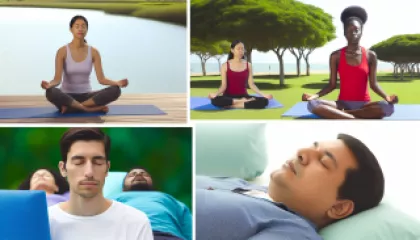5 Anxiety Relief Exercises That Changed My Life
1 year ago
Anxiety Relief Exercises
Life can be overwhelming. We all encounter various stressors that push our emotional and mental capabilities to their limits. For me, this was never more true than when I faced debilitating anxiety. There were days when the world felt too heavy, my heart racing faster than a speeding bullet train and my mind filled with fears and worries. But through it all, I found solace in anxiety relief exercises. Today, I want to share the top five exercises that changed my life.
5 Essential Steps to Enhance Your Digital Wellbeing
1 year ago
Digital Wellbeing
As our lives become increasingly intertwined with the digital world, it's imperative to understand the importance of digital wellbeing and how to enhance it. This concept encompasses a range of practices designed to ensure that your interactions with technology are healthy and beneficial, not stressful or damaging. Here are five essential steps to enhancing your digital wellbeing.


